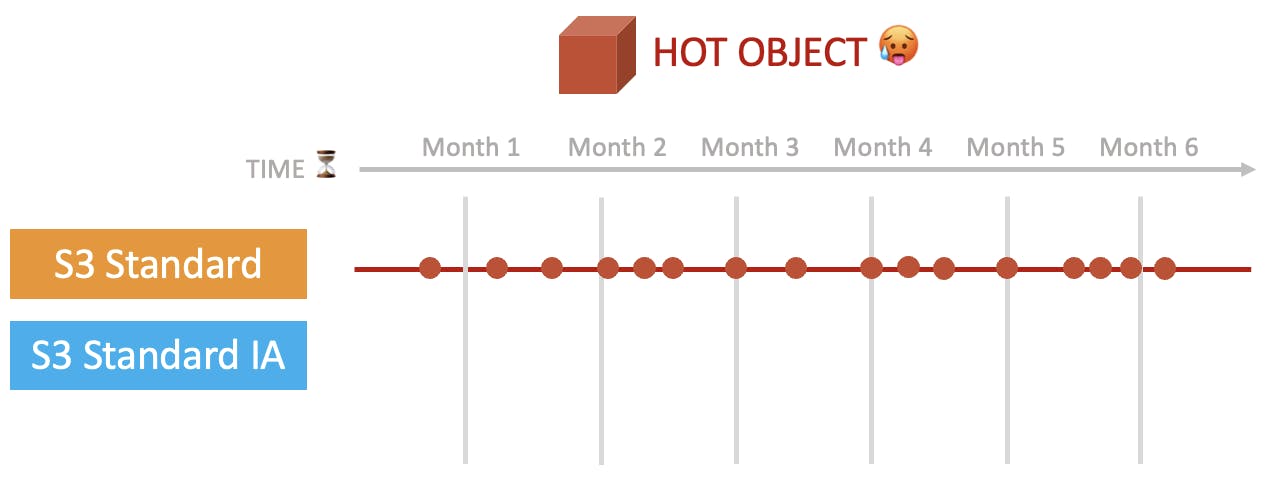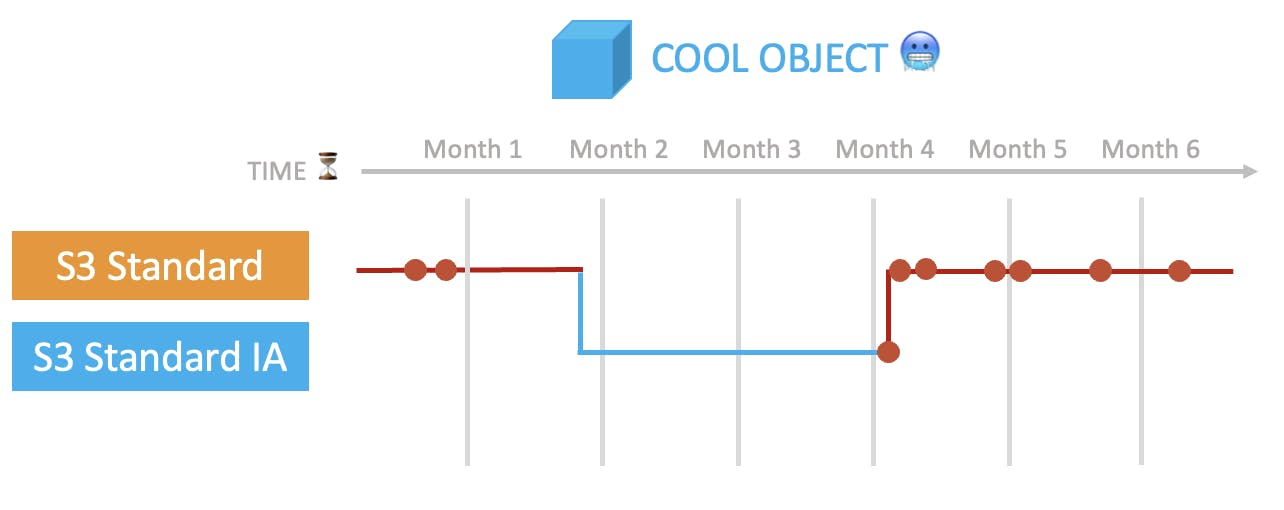In the era of big data and constantly growing storage demands, managing data efficiently and cost-effectively has become a concern for organizations. Intelligent Tiering, a powerful storage optimization solution for S3, addresses this issue effectively.
In this article, we will delve into the world of S3 Intelligent Tiering and explore its features, benefits, and best practices. We will uncover how this intelligent storage solution eliminates the need for manual data management, simplifies storage optimization, and ultimately helps organizations save costs without sacrificing performance.
Whether you are a data engineer, a cloud architect, or simply curious about AWS storage options, this article will provide you with a comprehensive understanding of S3 Intelligent Tiering and how it can optimize your data storage strategy.
How S3 Intelligent Tiering Works
S3 Intelligent Tiering works by leveraging algorithms and automation to automatically move objects between different storage tiers based on their access patterns and cost considerations.

The Different Types of Access Tiers
The following access tiers are offered by Amazon S3:
Frequent Access Tier: This tier is designed for objects that are accessed frequently. It provides low latency and high availability, making it ideal for frequently accessed data. Objects in this tier have a slightly higher storage cost compared to the other tiers but offer the fastest retrieval times.
Infrequent Access Tier: Objects that are accessed less frequently are automatically moved to the infrequent access tier. This tier offers a lower storage cost compared to the frequent access tier, but incurs slightly higher retrieval latency. It is suitable for data that is accessed infrequently but still requires relatively fast access when needed.
Archive Instant Access Tier: The archive access tier is meant for objects that haven't been accessed for a long time. It provides the lowest storage cost among the tiers but incurs a longer retrieval time. This tier is suitable for data that is rarely accessed but needs to be retained for compliance or regulatory purposes. Retrieving data from the archive access tier can take several hours, making it less suitable for frequently accessed or time-sensitive data.
The Archive Access tier provides the option to move infrequently accessed data that hasn't been accessed in the last 90 days. It offers cost savings compared to the Archive Instant Access tier, although data retrieval takes longer (3-5 hours). You can choose to extend the time before data moves to this tier.
The Deep Archive Access tier is for data that hasn't been accessed for over 180 consecutive days. It offers even greater cost savings (up to 99% on S3 Standard storage costs), but data retrieval can take up to 12 hours. You can also extend the last-access time for archiving by up to 730 days.
S3 Analyzes Access Patterns to Automatically Move Objects between Storage Tiers
By automatically moving objects between these tiers based on their access patterns, S3 Intelligent Tiering ensures that data is stored in the most cost-effective tier while still maintaining the required performance and availability levels. This tiering approach allows organizations to optimize their storage costs without compromising data accessibility.

When objects are initially stored in S3, they are placed in the frequent access tier, which offers low latency and high availability. As time goes on, S3 Intelligent Tiering continuously analyzes the access patterns of the stored objects. If an object remains infrequently accessed for a certain period of time, it is automatically moved to the infrequent access tier, which provides a lower storage cost but slightly higher retrieval latency.

If an object in the infrequent access tier starts to experience frequent access again, S3 Intelligent Tiering promptly moves it back to the frequent access tier to ensure optimal performance. This automated process of tiering objects based on their access patterns helps organizations achieve cost savings by storing data in the most cost-effective tier while maintaining high performance when needed.
S3 Intelligent Tiering also offers a special archive access tier for objects that haven't been accessed for a long time. This tier provides the lowest storage cost but incurs a longer retrieval time. It is suitable for objects that are rarely accessed but still need to be retained for compliance or regulatory purposes.
By dynamically adjusting the storage tiers based on access patterns, S3 Intelligent Tiering eliminates the need for manual data management and provides organizations with a seamless and efficient way to optimize their storage costs while ensuring data availability and performance.
Benefits of S3 Intelligent Tiering
Amazon S3 Intelligent Tiering offers numerous advantages, which we will delve into in the following paragraphs.
No Loss in Durability, Latency, or Throughput
S3 Intelligent Tiering ensures that all access patterns, regardless of the storage tier except for the deep storage tiers, provide the same high-performance characteristics of S3 Standard. This means that whether your objects are in the frequent access tier, infrequent access tier, or archive access tier, you can expect low latency and high-throughput performance.
Regardless of the storage tier your data occupies, you can consistently rely on S3's exceptional durability of 99.999999999%.
High Potential Cost Savings
S3 Intelligent Tiering offers significant potential cost savings through its storage tiers.
The Infrequent Access tier alone can save organizations up to 40% on storage costs compared to the frequent access tier. By automatically moving infrequently accessed data to this tier, businesses can take advantage of lower storage rates without sacrificing data availability.
Additionally, the Archive Instant Access tier provides even greater cost savings, reducing storage costs by up to 68%. While this tier incurs longer retrieval times, it is ideal for rarely accessed data that needs to be retained for compliance or regulatory purposes.
With S3 Intelligent Tiering, organizations can optimize their storage costs by leveraging these cost-effective tiers while ensuring data accessibility and availability when needed.
No Need for Manual Data Management through Automated Optimization
S3 Intelligent Tiering eliminates the need for manual data management and organization. With automated machine learning and analysis, it automatically moves data between storage tiers based on access patterns and cost considerations. This saves time, reduces complexity, and ensures data is stored in the most cost-effective tier without sacrificing accessibility or performance.
Real-World Use-Cases for S3 Intelligent Tiering
Amazon S3 Intelligent-Tiering storage is recommended in the following scenarios:
Unpredictable usage patterns: If you have data with unpredictable or changing access patterns, Intelligent Tiering can automatically optimize storage based on actual usage.
Unknown access frequency: When you're unsure about the frequency of data access, Intelligent Tiering can adapt to the changing access patterns.
Data analytics: Intelligent Tiering is well-suited for data analytics use cases where the access frequency of objects is also unpredictable.
Data lake storage: It provides cost-effective, long-term storage for data lakes, with the flexibility to retrieve data within 5-12 hours.
User-generated content: Intelligent-Tiering is beneficial for storing user-generated content like photos and videos, where it's challenging to predict which objects will be frequently accessed.
In summary, S3 Intelligent Tiering is versatile and can be used as the default storage class for most workloads, but it particularly shines in scenarios with unpredictable or unknown access patterns.
Best Practices for Implementing S3 Intelligent Tiering
Provide tips and recommendations for effectively implementing S3 Intelligent Tiering, including considerations for data access patterns, monitoring, and cost optimization.
Discuss how to set up lifecycle policies and analyze cost and access patterns to optimize storage efficiency.
Limitations and Considerations - Or When Not to Use Intelligent Tiering
There are certain situations where using S3 Intelligent Tiering is not a good choice. Among them are:
Predictable access patterns: the obvious one. If your objects have highly predictable access patterns, you can handle them using object lifecycle rules instead of S3 Intelligent-Tiering. This can help you avoid the monitoring charge associated with Intelligent-Tiering.
Small objects: Objects smaller than 128KB will not be moved from the frequent access tier to the infrequent access tier. In such cases, using a different storage class may be more appropriate.
Short-lived objects: S3 Intelligent-Tiering imposes a minimum storage duration charge of 30 days. If you anticipate that your objects will be deleted within this timeframe, intelligent tiering may not be the most suitable option.
If none of the above points apply to your use case, S3 Intelligent Tiering will likely be a suitable choice.
Conclusion
In conclusion, Amazon S3 Intelligent Tiering is a powerful storage optimization solution that automates data management, reduces storage costs, and maintains high performance and availability. By leveraging machine learning algorithms, it adapts to changing access patterns and ensures data is stored in the most cost-effective tier.
Ideal for unpredictable access patterns and various use cases, S3 Intelligent Tiering is a versatile storage option that simplifies data management and helps organizations achieve cost savings without compromising data accessibility.
Frequently Asked Questions
What is Amazon S3 Intelligent Tiering?
Amazon S3 Intelligent Tiering is a storage optimization solution that automatically moves data between storage tiers to help organizations save costs.How does S3 Intelligent Tiering work?
S3 Intelligent Tiering uses algorithms and automation to analyze access patterns and move objects between different storage tiers, ensuring data is stored in the most cost-effective tier while maintaining required performance and availability.What are the benefits of using S3 Intelligent Tiering?
Benefits of S3 Intelligent Tiering include no loss in durability, latency, or throughput, high potential cost savings, and no need for manual data management through automated optimization.When should I use S3 Intelligent Tiering?
S3 Intelligent Tiering is recommended for use cases with unpredictable or unknown access patterns for files that are stored for more than 30 days.When should I not use S3 Intelligent Tiering?
Avoid using S3 Intelligent Tiering for predictable access patterns, small objects, and short-lived objects. In these cases, other storage classes or object lifecycle rules may be more appropriate.
If you'd like to learn more about S3, check out the related articles on our blog. For example:

